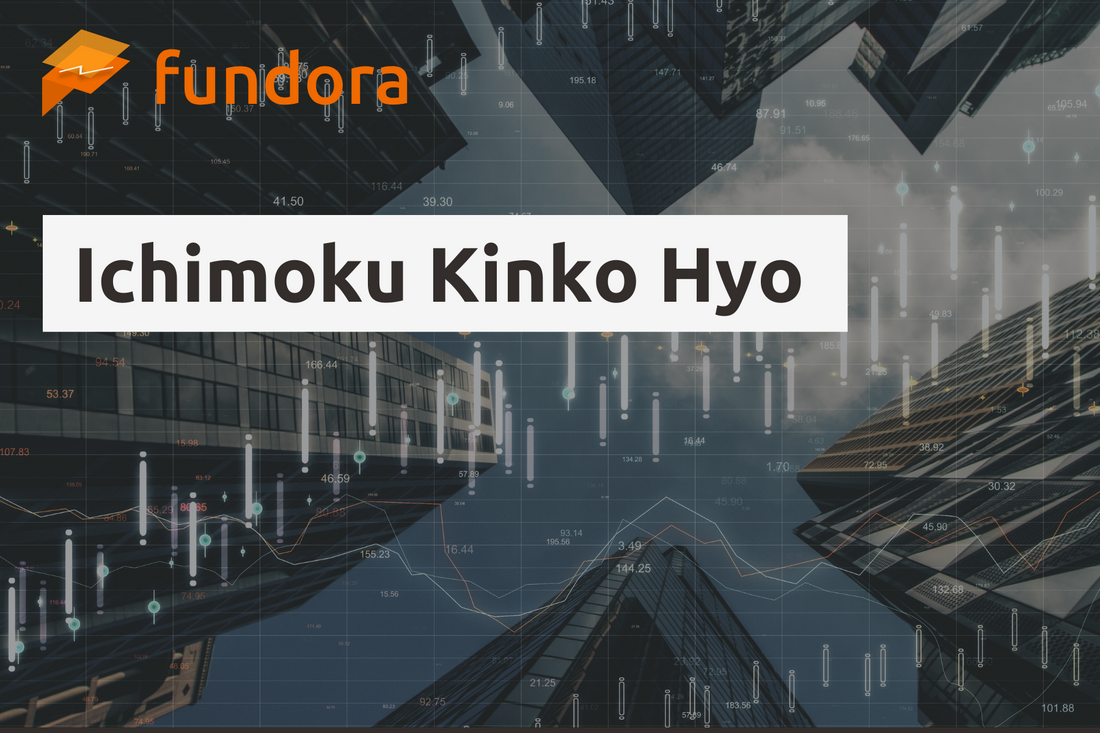
Ichimoku Kinko Hyo
Share
What Is the Ichimoku Kinko Hyo? A Beginner-Friendly Guide to Reading and Using It
Table of Contents
- 2-1. Tenkan-sen (Conversion Line)
- 2-2. Kijun-sen (Base Line)
- 2-3. Senkou Span A (Leading Span 1)
- 2-4. Senkou Span B (Leading Span 2)
- 2-5. Chikou Span (Lagging Span)
1. Overview of Ichimoku
Ichimoku Kinko Hyo is a technical indicator developed by Hitori Yamaoka in Japan to help visualize market trend, momentum, and balance at a glance. Using multiple lines, it supports trend analysis and judgments about support and resistance.

2. Components of Ichimoku
Ichimoku consists of the following five lines:
2-1. Tenkan-sen (Conversion Line)
- Formula: (Highest High over the past 9 periods + Lowest Low over the past 9 periods) ÷ 2
- Represents the short-term trend and visualizes direction.
2-2. Kijun-sen (Base Line)
- Formula: (Highest High over the past 26 periods + Lowest Low over the past 26 periods) ÷ 2
- Shows the medium-term trend and market balance.
2-3. Senkou Span A (Leading Span 1)
- Formula: (Tenkan-sen + Kijun-sen) ÷ 2
- Plotted 26 periods ahead and forms one edge of the cloud (Kumo).
2-4. Senkou Span B (Leading Span 2)
- Formula: (Highest High over the past 52 periods + Lowest Low over the past 52 periods) ÷ 2
- Plotted 26 periods ahead and forms the other edge of the cloud.
2-5. Chikou Span (Lagging Span)
- Formula: Plot the current closing price 26 periods back
- Compares the present price with past prices to gauge momentum.
3. Why the Cloud (Kumo) Matters

- Cloud area: The space between Senkou Span A and Senkou Span B is the “cloud,” representing potential support and resistance zones.
- Cloud color: When Senkou Span A is above Senkou Span B, it’s a bullish cloud (often shown in a lighter/green color). When Senkou Span A is below Senkou Span B, it’s a bearish cloud (often a darker/red color), hinting at trend direction.
4. Key Ways to Use It

4-1. Trend Analysis
- If price is above the cloud: uptrend.
- If price is below the cloud: downtrend.
4-2. Entry Points
- When the Tenkan-sen crosses above the Kijun-sen: “buy” signal.
- When the Tenkan-sen crosses below the Kijun-sen: “sell” signal.
4-3. Checking Support & Resistance
The cloud area often works as dynamic support or resistance for price action.
5. Practical Examples
Buy signal: Price breaks above the cloud and the Tenkan-sen crosses above the Kijun-sen.Sell signal: Price breaks below the cloud and the Tenkan-sen crosses below the Kijun-sen.
6. Cautions
Usage Notes
- Lagging nature: Like other indicators, Ichimoku is based on past data, so signals can arrive with a delay.
- Match with market regime: It tends to work well in trending markets but can generate noise in ranges.
7. Summary
Ichimoku may look complex at first, but once you get used to it, you can grasp trend and support/resistance at a glance. Combining it with other indicators can further improve the accuracy of your analysis.
Related Articles